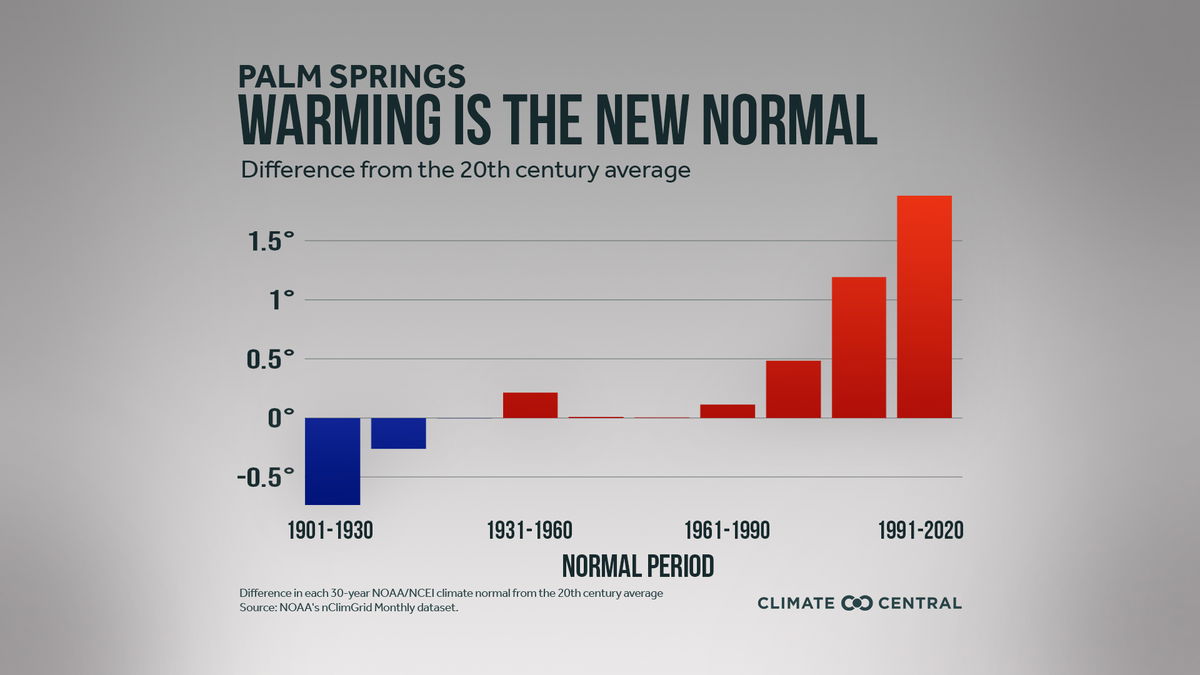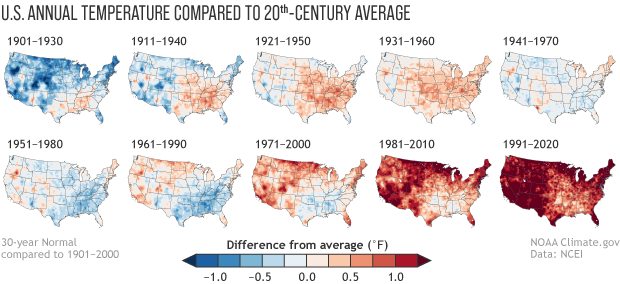New climate normals released: What this means for the Coachella Valley
Every decade, the National Oceanic and Atmospheric Administration (NOAA) releases new climate normals. These normals give the public, meteorologists, and businesses a standard way to compare 30-year averages of things like temperature, precipitation, and other parameters. These normals give a reference point for comparing current weather against what is considered to be "normal". These new set of normals span from 1991 to 2020. The last update of normals was in 2011, spanning from 1981 to 2010.
When meteorologists present the forecast, you often near the comparison to average or what is normal. Normals reflect the impacts of changing climate on day-to-day weather conditions. “It’s not just one weather event and not just one month, it’s a 30-year average so we are seeing warmer and unfortunately drier," said NOAA and National Weather Service meteorologist Alexander Tardy.
For Palm Springs, the highest normal temperature was 108° for July 12 - July 28th. With the new normals, that highest normal is 109° spanning from July 10 - August 14th. “We’ve had record hot annual temperatures and summer temperatures. That includes 2018, that includes 2020, just last year,” said Tardy. The minimum normal temperature for Palm Springs also rose from 44° to 46°.

Some of the consequences of increasing temperatures includes running the air conditioner more, experiencing more heat illness, and also increased evaporation of surroundings. The increase in evaporation can lead to less water supply, drier soils, and drier vegetation. “Higher fire threat is the bottom line, but also more tendency to fall into drought,” added Tardy. Drought doesn't always occur. "We have a normal dry summer and a normal hot summer, but what we are talking about here is changes beyond that,” said Tardy.
When it comes to rainfall, the total yearly precipitation normal for Palm Springs fell from 5.75" to 4.61". “That much loss in precipitation and that much gain in temperature is a significant trend,” said Tardy. These trends show abnormal drying and abnormal warming. “It doesn’t mean we won’t get flooding and it doesn’t mean we won’t get cold weather at times. But overall, we are seeing more extremes in drier periods and drier years, and hotter summers and hotter temperatures,” said Tardy.

Moving forward, the little things like recycling, reusable energy, and water conservation can help make a positive long term impact. “Don’t wait another 10 years before you start making changes, even if they are small changes,” said Tardy.
Meteorologist Taban Sharifi will break down these new set of normals and what this means for the Coachella Valley. Tune in tonight on KESQ News Channel 3.
For more information on climate normals and what they mean: NOAA Delivers New U.S. Climate Normals
